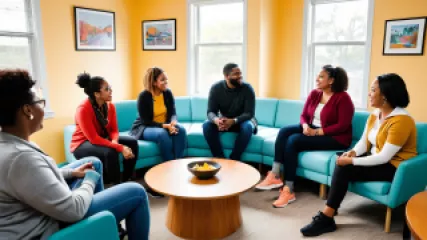Selvværd Boost
Boosting Self-Esteem Through Confidence Enhancement Workshops
Introduction
Self-esteem plays a crucial role in our overall well-being and happiness. When we have healthy self-esteem, we feel confident, capable, and worthy of love and success. However, many individuals struggle with low self-esteem, which can negatively impact various aspects of their lives. Fortunately, there are effective strategies and resources available to boost self-esteem and foster confidence. One such resource is confidence enhancement workshops, which provide individuals with the tools and support they need to develop a strong sense of self-worth and empowerment. In this interview feature, we will explore the benefits of confidence enhancement workshops and the impact they can have on self-esteem.
Interview with Eric Bell: Self-Esteem Coach and Workshop Facilitator
To gain insights into the world of confidence enhancement workshops, we spoke with Eric Bell, a renowned self-esteem coach and workshop facilitator. With years of experience helping individuals build their self-esteem, Eric sheds light on the transformative power of these workshops.
Q: Can you explain what a confidence enhancement workshop is and how it differs from traditional counseling or therapy?
Eric Bell: A confidence enhancement workshop is an immersive and experiential learning environment designed to help individuals improve their self-esteem and confidence. Unlike traditional counseling or therapy, which may focus more on introspection and processing past experiences, confidence enhancement workshops emphasize practical tools and strategies that participants can implement in their daily lives. These workshops often include a combination of group activities, individual reflection, and interactive exercises to facilitate personal growth and development.
Q: What are some common topics covered in confidence enhancement workshops?
Eric Bell: Confidence enhancement workshops cover a wide range of topics related to self-esteem and personal empowerment. Some common themes include identifying and challenging negative self-talk, setting boundaries, developing assertiveness skills, cultivating self-compassion, and embracing vulnerability. The workshops also provide a safe space for participants to share their experiences, learn from one another, and receive support and guidance from the facilitator.
Q: How do confidence enhancement workshops help individuals boost their self-esteem?
Eric Bell: Confidence enhancement workshops are designed to create a transformative experience for participants. Through various activities and exercises, individuals gain a deeper understanding of their strengths, values, and worthiness. They learn practical techniques to challenge self-limiting beliefs and replace them with empowering thoughts and affirmations. The workshops also provide opportunities for participants to practice new skills in a supportive environment, which helps build confidence and self-assurance.
Q: Can you share a success story or testimonial from someone who has benefited from a confidence enhancement workshop?
Eric Bell: Absolutely! Let me tell you about Stephan Lopez, a participant in one of my recent workshops. Stephan had been struggling with low self-esteem for years, often doubting his abilities and feeling unworthy of success. Through the workshop, he discovered the root causes of his self-doubt and learned techniques to reframe his negative thoughts. Stephan also connected with other participants who shared similar experiences, which helped him feel less alone in his journey. Over time, Stephan's self-esteem improved significantly, and he started pursuing his goals with confidence and resilience. Today, Stephan is thriving both personally and professionally, thanks to the transformative experience of the confidence enhancement workshop.
Q: Are there any virtual options available for those who cannot attend in-person workshops?
Eric Bell: Absolutely! In the age of technology, virtual options have become increasingly popular and accessible. Many self-esteem coaches and workshop facilitators, including myself, offer online workshops and counseling sessions. These virtual platforms provide individuals with the flexibility to participate from the comfort of their own homes while still receiving the same level of support and guidance as in-person workshops.
Q: How can individuals find reputable confidence enhancement workshops or self-esteem coaches?
Eric Bell: When searching for confidence enhancement workshops or self-esteem coaches, it's essential to do thorough research and ensure that the facilitator or coach has the necessary qualifications and experience. Reading testimonials or reviews from past participants can also provide valuable insights into the effectiveness of the workshops. Additionally, reaching out to local counseling centers, community organizations, or mental health professionals can help individuals find reputable resources in their area.
Conclusion
Boosting self-esteem is an ongoing journey, and confidence enhancement workshops offer a valuable path towards achieving this goal. By providing individuals with practical tools, support, and a nurturing environment, these workshops empower participants to challenge negative beliefs, cultivate self-compassion, and embrace their inherent worthiness. Whether attending in-person or virtual workshops, individuals can embark on a transformative experience that ultimately leads to enhanced self-esteem and a more fulfilling life. So, take the first step towards self-love and consider joining a confidence enhancement workshop or seeking the guidance of a self-esteem coach today. You deserve it!















